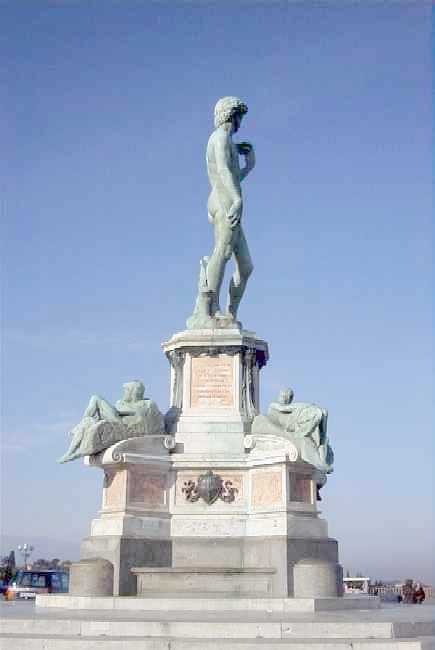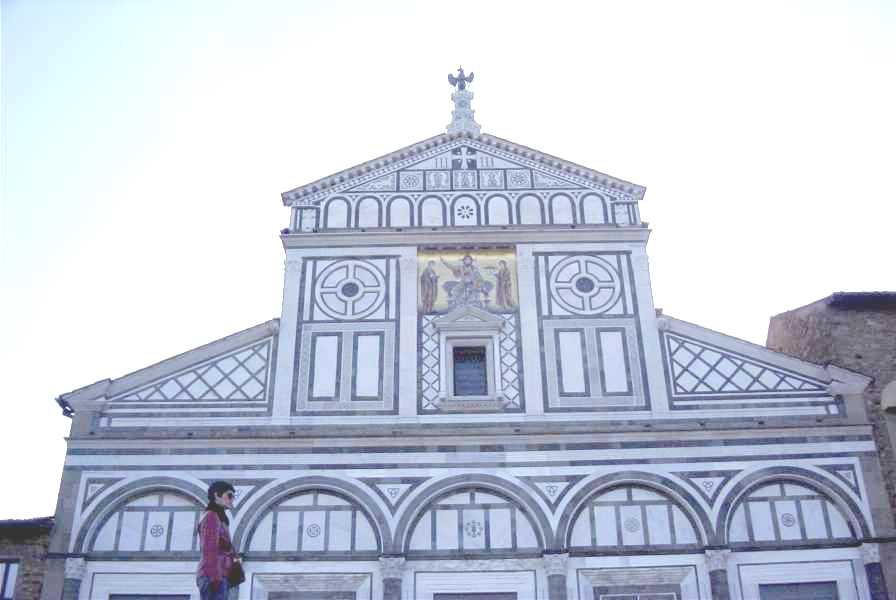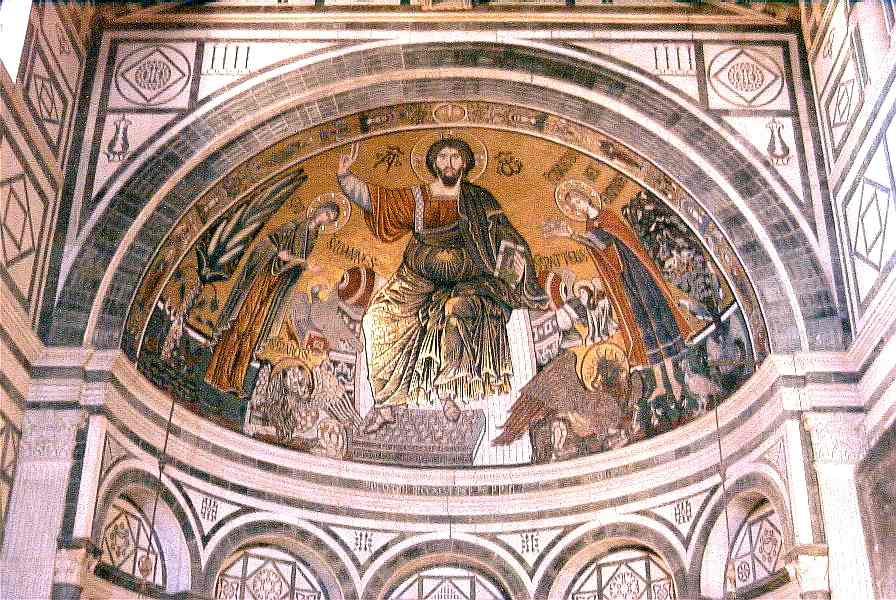

Our last morning in Florence began with a quick trip into the city to pick up a rental car. Given the city traffic we had seen in the previous three days, we dreaded having to drive anywhere in Florence. However, the town was still asleep on a Saturday morning (with the exception of Japanese photographers who never seem to close their eyes or lenses), and we made it to the Southern outskirts easily. After checking out of the hotel, our first (and only Florence) stop was the Piazzale Michelangiolo -- tour bus heaven as this is nothing more than a huge parking lot with a great view of Florence to the North across the river and the statue of David and the Medici tomb carvings below:

Maybe America could solve its congestion problems by building parking lots far outside the city and putting Michelangelo statues in the middle in order to attract cars out of the crowded city cores.
Next we drove up the steep hill (it's amazing how quickly our American habits came back when we get possession of an automobile, even if temporary) to the old (1013AD) church of San Miniato al Monte. The church hides behind wide stairs that keep photographers from getting a full image.
This is a lovely church, a great example of Tuscan Romanesque architecture, which looks a little like the Florence Baptistery which was built in the same approximate era. Several other churches built much later also copied its style--at least when the Florentines get around to putting on church facades which wasn't all that often. San Miniato has survived since the 11th century virtually intact even though this area was under attack as the combined forces of the Pope/Emperor/Medicis stormed Florence in 1530 to destroy the Republic. (One of the Medicis' quasi-adopted sons designed the fortifications to repel them but was apparently later forgiven since he was, after all, Michelangelo. He turned out to be, as expected, ingenious in defending the place including clothing the bell tower in mattresses to absorb the blows of the cannonballs.)
(Totally useless aside: If you got the headline, you really should think about getting a life!)
This picture shows the upper story of the 12th century facade, but enough to see the Romanesque arches defined by the white Carrara and green Prato marble inlays and the 13th century mosaic of Christ between Mary and St. Miniato. This multi-color marble approach inspired several other major league church exteriors in Florence. Atop is a statue of an eagle on a bale of wool -- the symbol of the linen-drapers guild (like they need a union for that!) that administered the church. At the bottom, that's Pietrina, not just another icon.
St. Miniato seems to have the same background as one of Paris's patrons, St. Denis. Both were bishops who had their heads cut off and took their heads for a walk to their burial sites. In this case, St. Miniato walked up the hill to where his cave had been during his hermit days. The church was built over his bones.
Inside is a similar mosaic which reminded us of the great Norman cathedrals in Sicily with their Pantocrator mosaics. Like the mosaic outside, Christ is flanked by Mary and St. Miniato.

San Miniato has many later additions inside like a Renaissance tomb for a Portuguese cardinal (the king's nephew) by Rossellino and Luca della Robbia.
Outside we paused for a last panoramic view of Florence and gazed briefly at the Monumental Cemetery that abuts the steep stairs in front of the cathedral. Soon we were on the road South down to Sienna. Please join us by clicking here.
Where do you want to go today? Here's a few choices:
